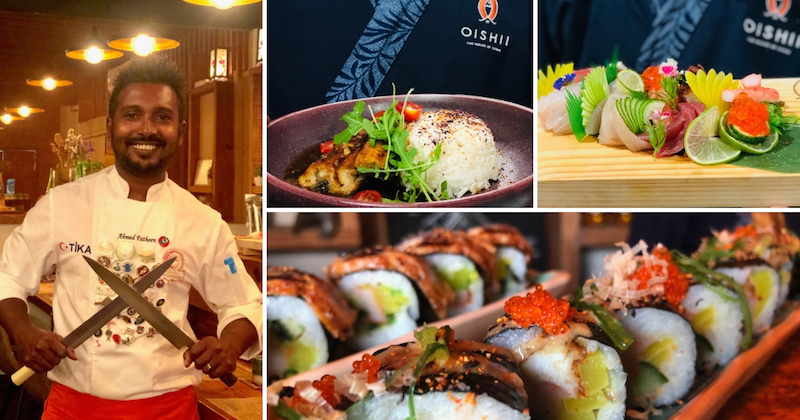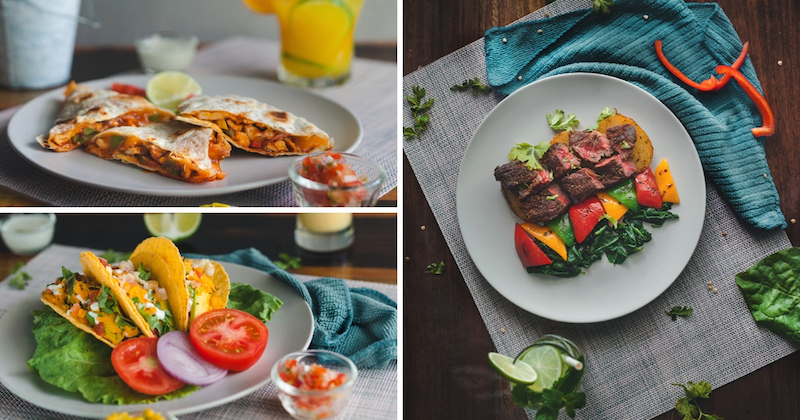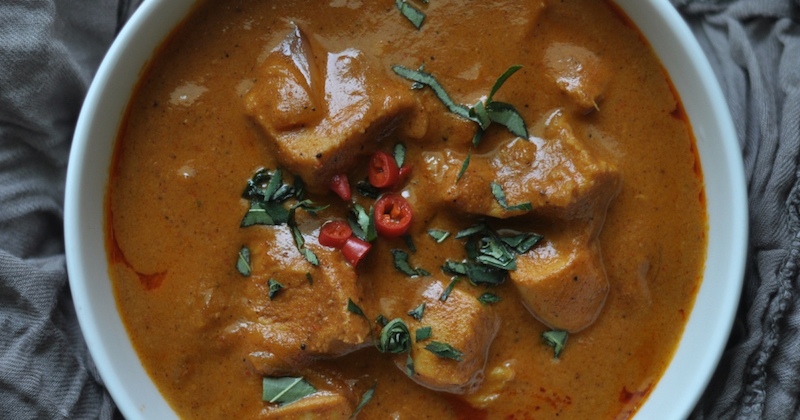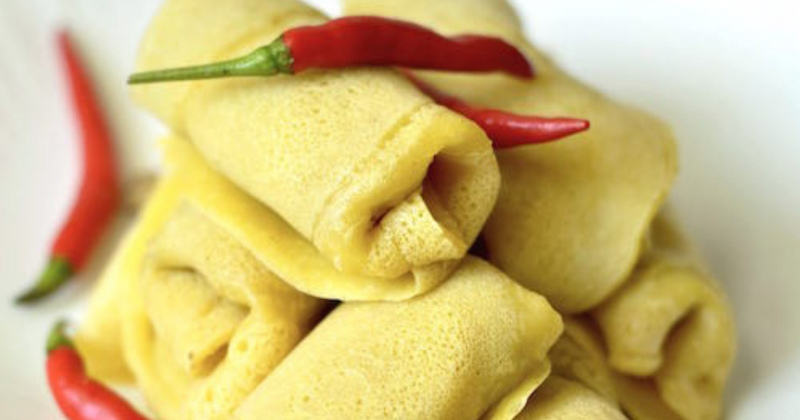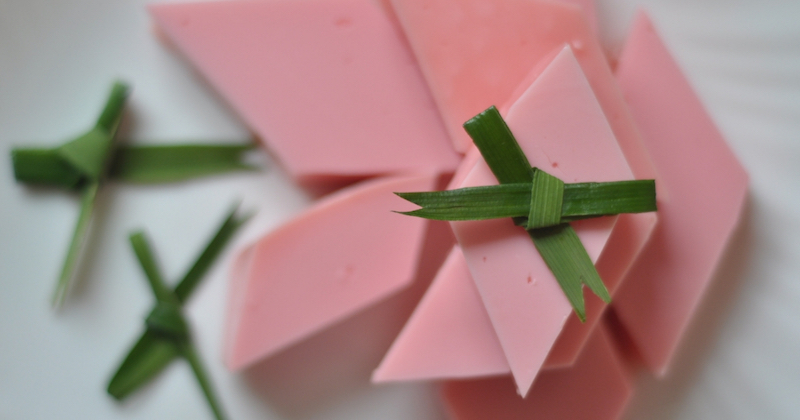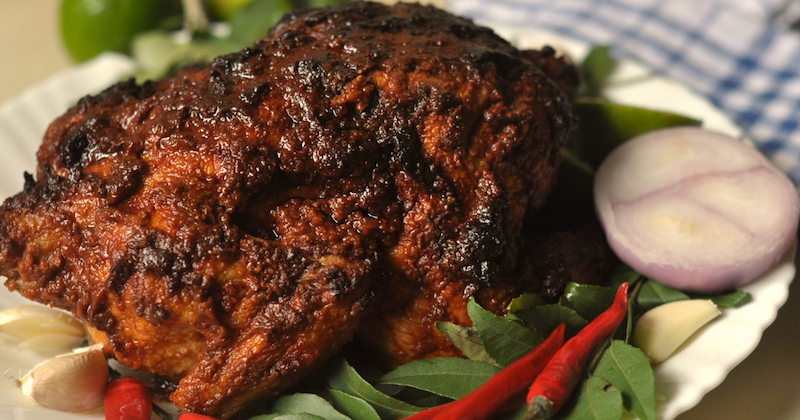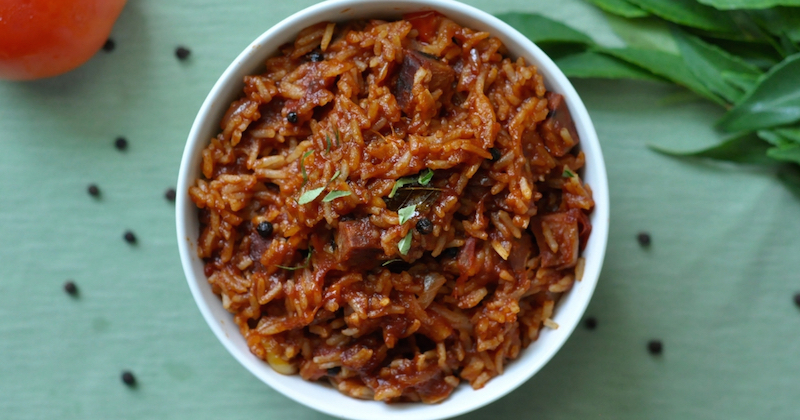Gulab Jamun

We have to admit that making gulab jamun requires a bit of technique; and we had to make quite a number of batches before we nailed one that’s not hard in the centre. The trick to that apparently lies in how well you make the dough, how you roll the dough into balls and how you fry them. We’ve detailed them in the instructions, but for now lets just say gentleness is the key.
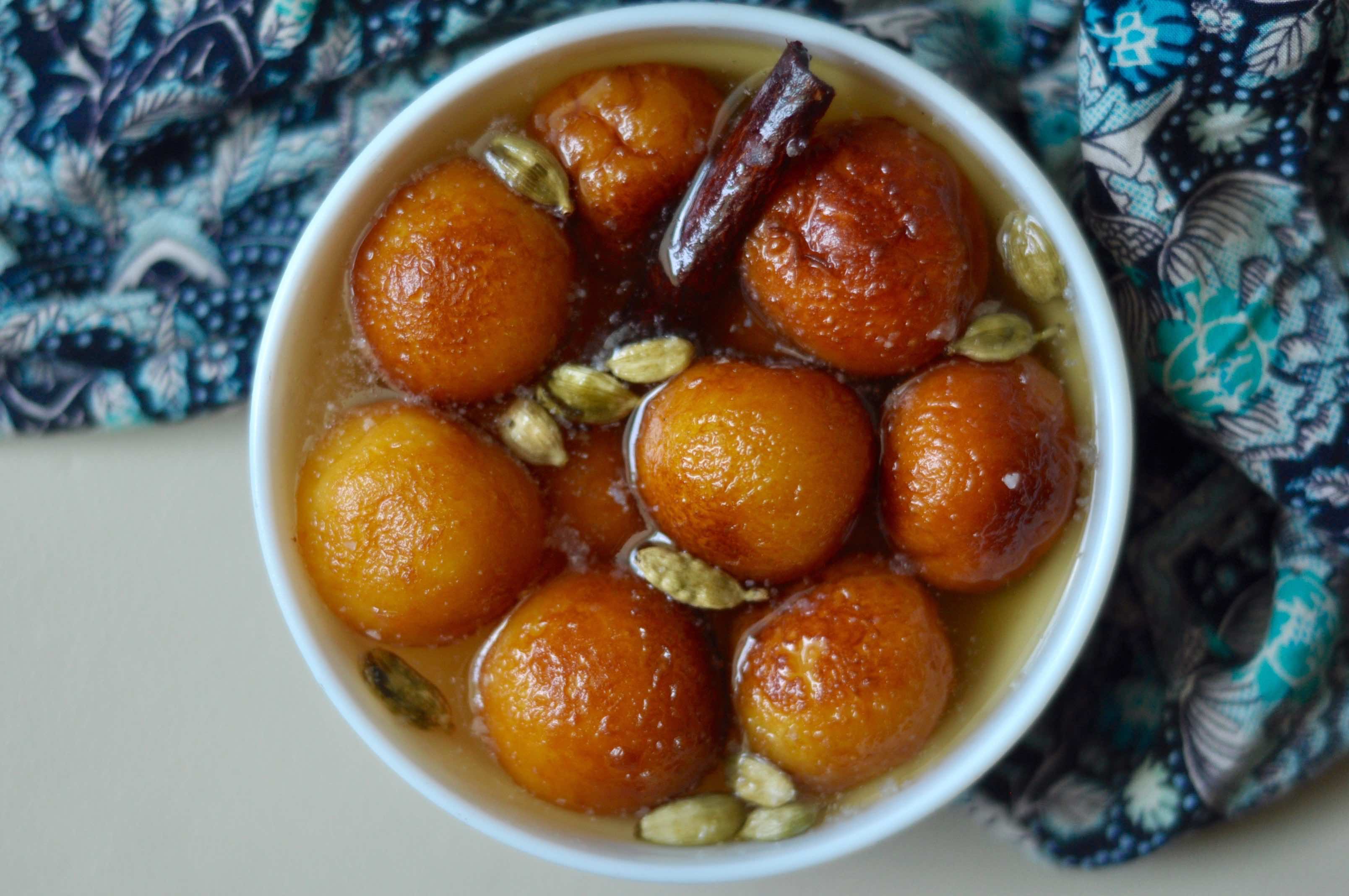
Makes: around 20 gulab jamuns
Ingredients for the sugar syrup:
- 1 cup sugar
- 2 cups water
- 5 cardamom pods
- 3 inch piece of cinnamon
- 2 tsp. rose water
Ingredients for the dough:
- 2 cups milk powder (we used Coast)
- 4 tbsp. flour
- 1 tsp. baking powder
- ½ cup of milk (we made this by dissolving 1 tbsp. of milk powder into ½ a cup of water)
- ½ tsp. ground cardamom powder
- 200 ml ghee (you can use oil too, but we really like the flavour of ghee)
Instructions:
- Add all the sugar syrup ingredients, except the rose water, to a large pot and heat the mixture for around 15-20 minutes on low-medium heat. The idea is to get the sugar dissolved and also to get all the flavours into the syrup. Also, do remember to snip off the ends of the cardamom pods before you put them in.
- Switch off the heat and stir in the rose water. That’s it for the sugar syrup. You can transfer the syrup to the container you are going to use for soaking the gulab jamun.
- In a bowl, mix together the milk powder, baking powder, ground cardamom and flour. Gradually mix in the liquid milk while you knead the dough with your fingers; you really have to be a bit careful about this. The dough is going to be a bit sticky, but you’ll have to work it until you get a smooth consistency. Half a cup of liquid milk worked for us, but if you find your dough to be dry for some reason, add some more, but really carefully, a little at a time.
- Put a little bit of oil on your palms and fingers. This is going to make rolling the dough into balls a bit easier as the mixture will otherwise stick to your hands. Roll the dough into small balls; marble size will do as they are going to get bigger when they are fried and also when they soak up the syrup. When rolling them into balls, don’t apply too much pressure, but rather let the circular motion set them into shape. If you put too much pressure when rolling them, there’s a chance they might end up with a hard centre. Also, make a tiny little ball to test the frying oil or ghee with.
- Heat the ghee or oil. You might need to use more ghee or oil depending on the depth of the pan or pot you are frying them in. The idea is to have at least half the height of the dough balls submerged in the oil when frying.
- Drop the testing dough ball into the oil or ghee. When the ball rises to the top and you can see slow bubbles around it, that’s the right temperature to put in the first batch of dough balls in. If the bubbles are too rapid, that means the temperature is too high and you’ll need to lower the heat. You’ll actually need to keep the temperature of the ghee or oil low through out the frying process as frying them on high heat will result in hard gulab jamun again, plus there’ll be the risk of getting burnt outsides and uncooked insides. Also, don’t put all the gulab jamuns in there at once, do it in batches. We cooked ours in four batches.
- Through out the frying process, flip and turn the dough balls so that they are cooked evenly. When they turn golden brown, remove from the ghee or oil and place them in the sugar syrup.
- Repeat with the rest of the batches until you are done with all the dough balls.
- Let the dough balls soak in the sugar syrup for around 5-6 hours. They turn up nicer if you keep them at room temperature rather than putting them in the fridge. Also, if for some reason your gulab jamuns turned out a little bit hard and are not soaking up much syrup, just gently heat them together with the sugar syrup for a little while; they will soften, so don’t worry.
*We have a newer Gulab Jamun recipe that uses NIDO Milk Powder. Click here to view it.
About Lonumedhu
Lonumedhu is about eating great food right here in the Maldives.
Our easy to follow recipes use locally available ingredients.
In our blog you will find food news, interviews with chefs and cooks, useful information about eating out and other foodie reads.
Contacts
© Lonumedhu.com 2017-2026. All rights reserved. No part of this website may be reproduced without the written permission of the publisher.
Advertisers
Lonumedhu.com has partnered with Qualia Pvt Ltd, a publishing & marketing agency, for its desktop and mobile advertising.
Advertising enquiries should be directed to (960) 987 4396 or marketing.sales@lonumedhu.com.

